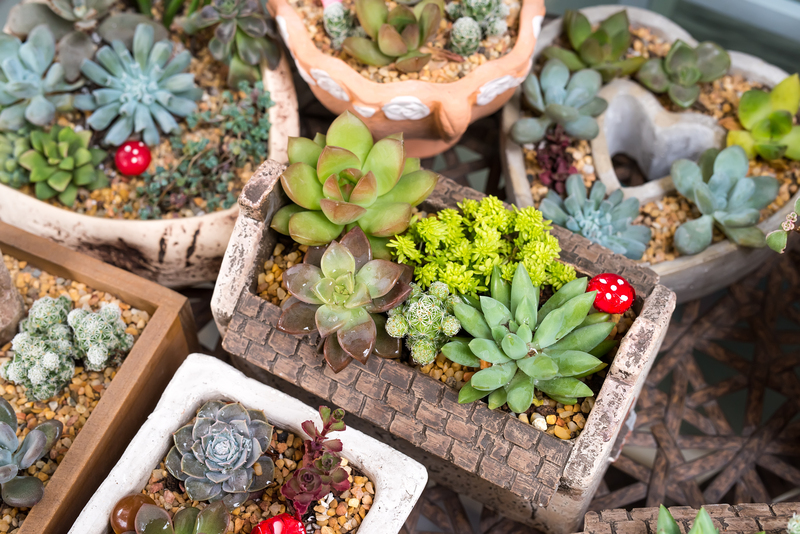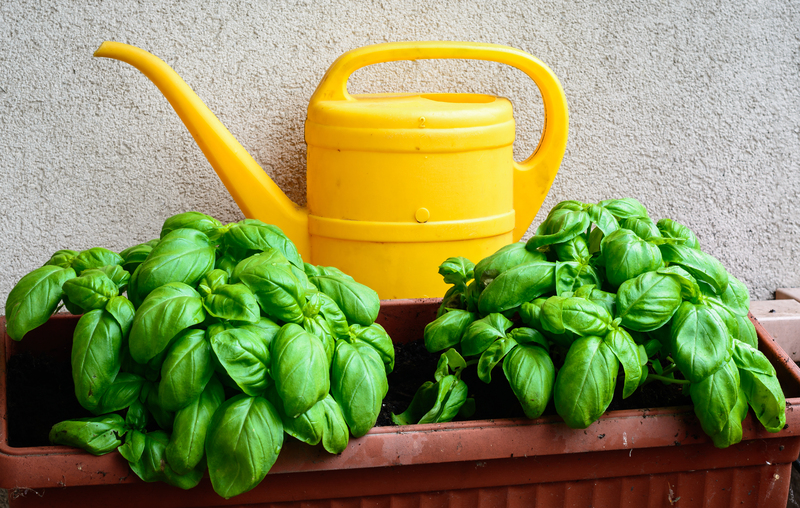A Journey into Orchid Care: Making Plants Thrive
Posted on 13/09/2025
A Journey into Orchid Care: Making Plants Thrive
Orchids are among the most captivating and diverse plants in the botanical world. Their unique beauty, fascinating biology, and sometimes elusive requirements make them a worthy challenge and a joyful pursuit for plant enthusiasts. Embarking on a journey into orchid care is not just about keeping a plant alive--it's about discovering the secrets to making orchids truly thrive.
Understanding Orchids: A Brief Introduction
Before diving into the specifics of orchid plant care, it's important to understand what makes orchids unique compared to other houseplants or garden specimens. The Orchidaceae family is one of the largest in the plant kingdom, with over 25,000 species and more than 100,000 hybrids. Their adaptability means they can be found on every continent except Antarctica, thriving in a variety of climates and environments.
Why Are Orchids So Popular?
- Exquisite and exotic blooms that last for weeks or even months.
- Wide range of colors, shapes, and fragrances, offering unique decorative possibilities.
- Relatively long lifespan compared to many flowering houseplants.
- Appealing to both beginners and seasoned horticulturists due to varied care requirements among species.

Essential Elements of Care: How to Make Orchids Thrive
Learning how to care for orchids is essential for anyone who hopes to enjoy their stunning blooms year after year. The following sections explore all aspects required for orchid plant care, ensuring that your plants can prosper with confidence.
1. Choosing the Right Orchid Species
Different orchid species have different care requirements. Some of the most popular genus for home cultivation include:
- Phalaenopsis (Moth orchids): Great for beginners, tolerate household conditions, bloom easily.
- Cattleya: Known for their showy and fragrant flowers; often used in corsages.
- Dendrobium: Diverse group, with species requiring from cool to warm conditions.
- Oncidium (Dancing Lady): Recognizable for their delicate, airy flower sprays.
Tip: Start with hardy, widely-available orchids before moving onto more challenging species.
2. Light Requirements for Orchid Plants
One of the most critical factors in successful orchid care is providing the right amount of light. Orchids are highly sensitive to their lighting environment--too much sun will scorch their leaves, while too little will inhibit flowering.
- Phalaenopsis: Prefer bright, indirect sunlight. East or west-facing windows are ideal.
- Cattleya & Oncidium: Thrive with a bit more light. Grow well in south-facing windows with sheer curtains.
- Dendrobium: Require bright light but avoid direct midday sun.
Check your orchid leaves for health indicators:
- Healthy leaves: Light-medium green and firm.
- Too much light: Yellow, scorched patches or sunburn.
- Too little light: Dark green, floppy leaves and no flowering.
3. Mastering Watering Techniques
Watering is often the trickiest part of orchid plant care. Improper watering is the leading cause of problems for these elegant plants.
- Do not overwater: Orchids prefer to dry out slightly between waterings.
- Check the media before watering--if it's still damp, wait another day.
- Water in the morning to allow moisture to evaporate before cooler evening temperatures.
- Use room-temperature, distilled or rainwater when possible to avoid root damage from minerals and chlorine.
Pro Tip: Most orchids in bark-based media require watering once a week, while those in moss may need less frequent watering. Adjust based on your specific environment.
4. The Importance of Humidity
Many orchid varieties are native to humid, tropical forests. Maintaining the appropriate humidity levels encourages lush growth and vibrant blooms:
- Ideal humidity: 50-70% for most orchid types.
- Increase humidity by placing plants on pebble trays with water, clustering plants together, or using a room humidifier.
- Avoid misting leaves directly to reduce the risk of fungal diseases.
5. Perfect Potting Media and Repotting Practices
The roots of orchids require air flow and do not benefit from traditional potting soil. Instead, use specialized media such as:
- Bark chips (fir, pine, or redwood for air circulation)
- Sphagnum moss (retains moisture, especially for younger plants)
- Perlite or charcoal (helps keep media airy and prevent compaction)
Repotting Best Practices
- Repot orchids every 1-2 years, ideally right after flowering.
- Trim away old, mushy, or dead roots.
- Select pots with drainage holes, avoiding waterlogged roots at all costs.
Fertilizing for Blooming Success
Orchids benefit from regular, gentle feeding--too much can damage their roots or push leafy growth at the expense of blooms.
- Apply a balanced orchid fertilizer diluted to one-quarter the recommended strength every 2-4 weeks during active growth (spring and summer).
- Reduce feeding during the plant's resting period (generally winter).
- Flush the media monthly with water to minimize salts and chemical buildup.
Remember: A properly fertilized orchid is more likely to reward you with multiple spikes and vibrant flowers.
Dealing with Common Orchid Problems
Even with optimal orchid plant care, issues may still arise. Here's how to troubleshoot the most common orchid challenges:
1. Pests and Disease
- Aphids, scale, and mealybugs: Remove with diluted soap solution or neem oil.
- Spider mites: Increase humidity and use a fine mist spray to keep them at bay.
- Root rot: Caused by overwatering--discard rotted roots and repot in fresh media.
- Leaf spots: Usually fungal or bacterial; trim affected leaves and ensure good air circulation.
2. Failure to Bloom
- Lack of sufficient light is the most common cause.
- Over-fertilization can lead to lush leaves but no flowers.
- If your orchid is happy but not blooming, it may need a mild drop in temperatures overnight to trigger flowering.
Orchid Care Through the Seasons
Orchids have natural cycles of growth, dormancy, and bloom. Understanding these cycles can help you tailor your care routine:
- Spring/Summer: Active growth. Increase watering, humidity, and regular fertilization.
- Autumn: Slow reduction of watering and fertilization. Many orchids prepare for dormancy or bloom spikes.
- Winter: Reduce watering and fertilizing. Provide as much light as possible and avoid cold drafts.
Advanced Orchid Care Tips
Once you master the basics of orchid plant care, try these advanced techniques to get the most out of your collection:
- Experiment with mounting orchids on bark or cork slabs for a natural look and excellent airflow.
- Monitor root health by growing orchids in clear pots to observe root color and moisture.
- Provide gentle air movement with a small fan to discourage fungal diseases and strengthen plants.
- Rotate your plants periodically so all sides get equal exposure to light.
Expanding Your Orchid Collection
Orchid propagation can be a rewarding next step for those looking to expand their plant family:
1. Division
When repotting large, multi-stemmed orchids (like Cattleya), divide the root ball into sections, each with at least three healthy pseudobulbs.
2. Keikis
Some orchids (particularly Dendrobiums and Phalaenopsis) produce baby plants called keikis on their flower spikes. Once roots reach several inches, carefully detach and pot up separately.
3. Seed Propagation
This method is complex and typically reserved for experienced growers, as it requires sterile conditions and precise nutrient gels.

Frequently Asked Questions about Orchid Plant Care
How often should I water my orchids?
Watering frequency depends on environmental factors like temperature, humidity, and potting media. Most orchids prefer to dry slightly between waterings--about once a week for bark and less often for moss. Test with a wooden skewer or by feeling the media.
What's the best spot for my orchid at home?
Bright, indirect sunlight in an east or west-facing window is ideal. Avoid direct midday sun. If in doubt, filter the light with a sheer curtain.
What causes yellow or brown leaves?
Leaves may turn yellow from too much light, overwatering, or as part of natural leaf shedding. Brown tips usually result from low humidity, salt buildup, or underwatering.
How do I encourage my orchid to rebloom?
Provide adequate light, reduce nighttime temperatures slightly in the fall, and ensure a good fertilizing regimen. After blooms fade, hold off on excessive watering and feeding until new growth appears.
Conclusion: Enjoying the Journey of Orchid Plant Care
A journey into orchid care is filled with learning, surprise, and reward. These remarkable plants respond to attentive care and can provide endless satisfaction as you watch them grow, bloom, and multiply. By understanding their specific needs-- from light and water to humidity and potting media--you unlock the keys to making orchids thrive. Whether you are a novice grower or a seasoned collector, the fascinating world of orchids offers something new at every turn.
Embrace the process, nurture your orchids patiently, and you'll be rewarded with nature's living works of art year after year. Happy growing!
- Interested in more tips? Subscribe to our newsletter for regular orchid care updates!
- Ready to expand your collection? Explore local orchid societies for plant swaps and expert advice.

